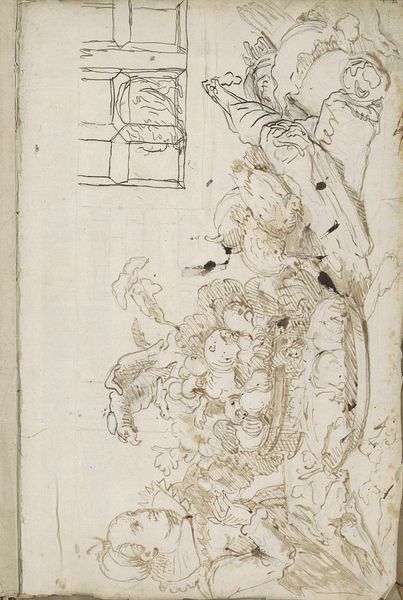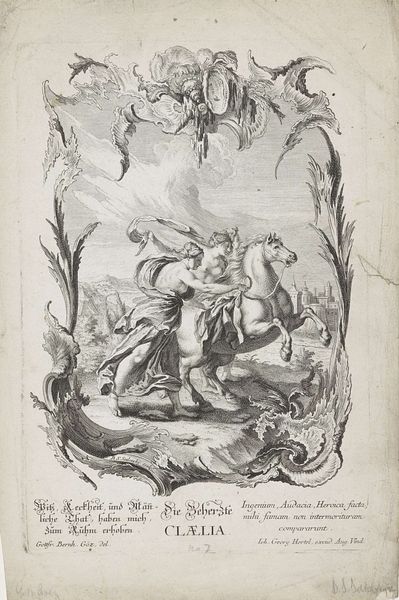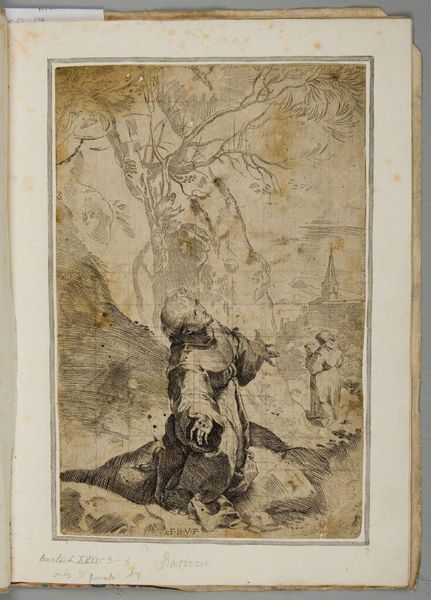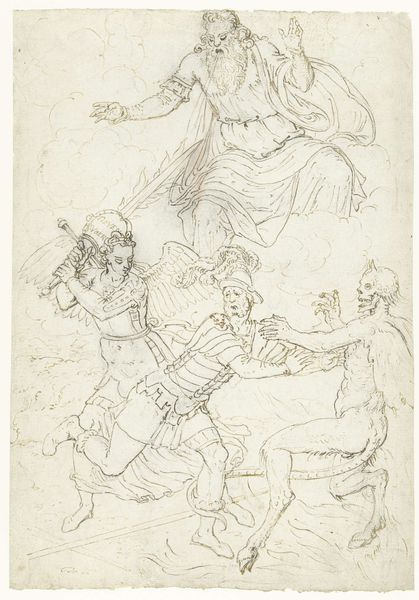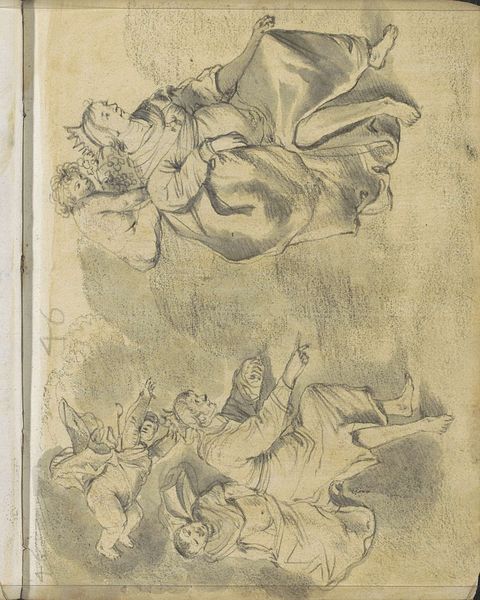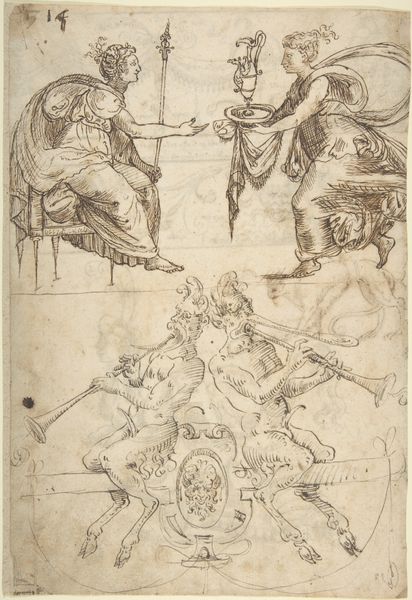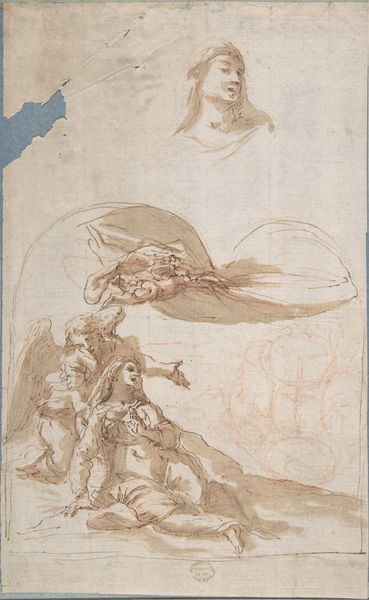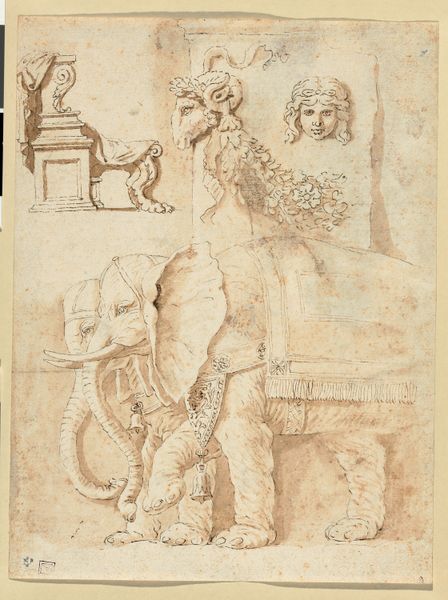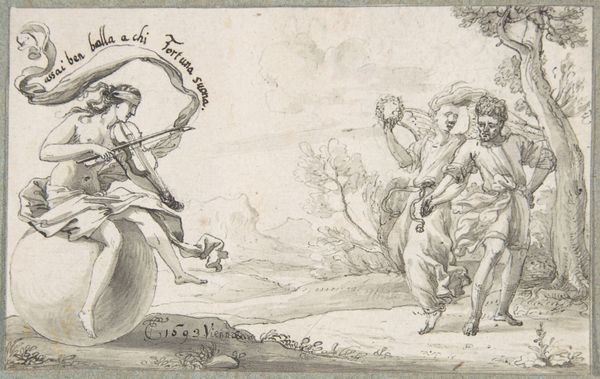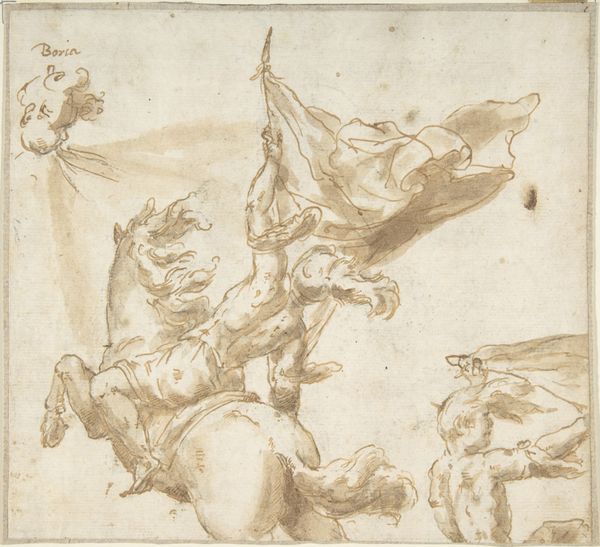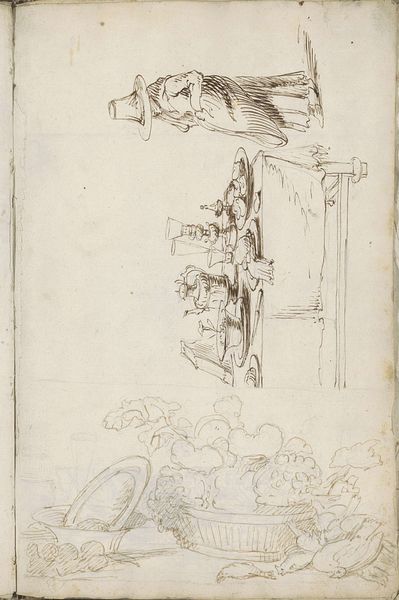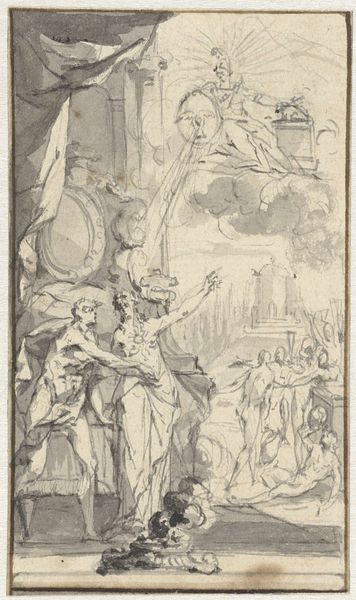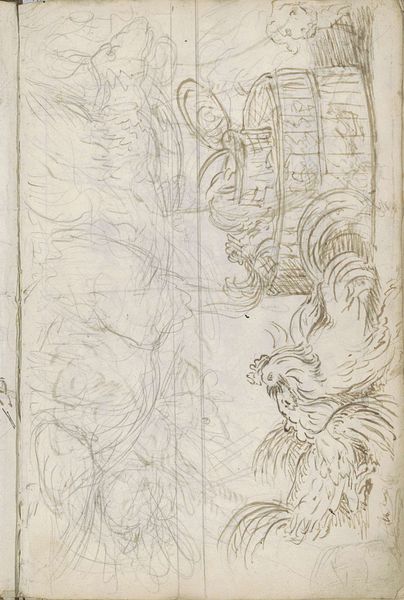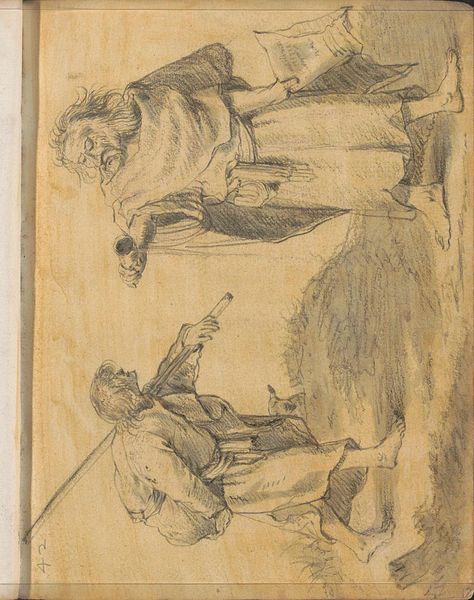
painting, watercolor
#
baroque
#
dutch-golden-age
#
painting
#
watercolor
#
fruit
Copyright: Rijks Museum: Open Domain
Curator: Standing before us is Paul de Vos's, *Still Life with Game, Fowl, Artichokes and a Crab on a Table*, believed to have been painted sometime between 1605 and 1678. The artwork employs watercolor. What are your initial impressions? Editor: Stark and yet sparse—the limited palette evokes restraint but the sheer number of game animals piled together hints at opulent consumption. It's a study of contrasts rendered in simple materials, watercolour, most likely. Curator: Precisely! Consider the historical context: such displays of wealth and bounty in the Dutch Golden Age are inherently linked to colonialism and exploitation of natural resources. The types of fowl and game laid out as if to display Dutch power. How do you think De Vos approaches materiality? Editor: With incredible care! I can make out the different textures, the bird’s plumage and the hard, brittle shell of that crab. The labour involved, and of the production of such works must be taken into account; how images like this elevated still-life into a status symbol. The skill in capturing light playing across various surfaces would not be possible with different materials. Curator: Yes! Consider, too, that period paintings like these often functioned as powerful ideological tools. Dutch art emphasized not only realism but the relationship between food and social identity; consumption patterns determined place in a rapidly evolving hierarchy. The very act of acquisition becomes central. Editor: I can certainly see how the social dynamics are communicated through the materials depicted, the accessibility and provenance, and who the works might be commissioned by, for what audience and use. Curator: Exactly. This approach allows for intersectional readings of history to surface—gendered division of labor, socio-economic classes and even access to clean drinking water. Editor: Considering the labor put into the creation of watercolors versus oils helps appreciate more than their face value in terms of the art history we’re accustomed to. Curator: Indeed. The piece presents rich entry points into broader debates surrounding class, labour and materiality in 17th-century Netherlands. Editor: Right—let us both try looking at the piece anew through each other's insights.
Comments
No comments
Be the first to comment and join the conversation on the ultimate creative platform.
